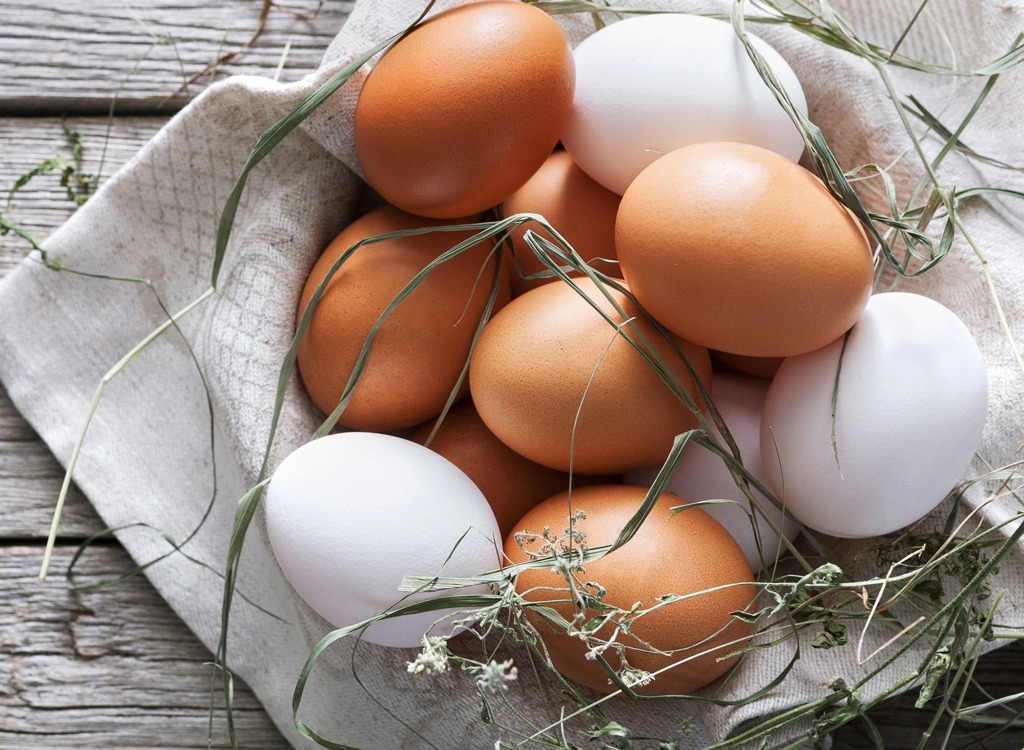Brown eggs may look healthier—but are they?
When I was growing up, egg choices were pretty simple. Medium, Large, Extra Large or Jumbo, all in white, and all in one-dozen styrofoam clamshells. Over the years, the egg aisle has expanded. You now have your choice of all sorts of eggs, from free-range to vegetarian, six packs to 24 packs, your eggsperience is a bit more bespoke.
But beyond price point, the biggest decision these days seems to be eggs with white shells or brown shells. Brown eggs seem to be the go-to for pretty pictures, making white eggs seem a bit pedestrian visually. And the slight upcharge on those brown eggs implies at least a tiny bit of superiority. But when it comes to brown eggs vs. white eggs, are there really differences we need to know about?
Are white eggs and brown eggs different?
For starters, know that eggs come in all sorts of colors. Non-commercially farmed eggs can have a wide spectrum of hues, from grays and blues, to greens, which you might see at your local farmer’s market. The most important thing to know about eggshell colors is that they are determined solely by the breed of chicken laying them. When it comes to the eggs at your local grocery store, most white eggs are laid by chickens with white feathers and earlobes, most brown eggs by birds with red feathers and earlobes, although there are breeds where the reverse is true.
Are brown eggs healthier than white eggs?

The important part is that from a nutritional perspective, and cooking applications, the interiors are identical. Only the shell color is different. As long as you are not choosing eggs with omega-3 enrichments, where the feed of the chickens is enhanced to provide extra omega-3 benefits, brown and white eggs are identical nutritionally. So there are no specific brown egg benefits, unless you prefer the color visually! You might wonder, are white eggs bleached? But never fear, all eggs are sold in their natural colors.
Do eggs with different color shells taste different?
When it comes to flavor, the same holds true—there is no difference in how eggs tasted based on shell color. Flavor differences can occur when the feed of the eggs is different, which is why when you get fresh eggs at the farmer’s market or from a neighbor with a coop, the yolks might be a deeper orange, and the flavor might seem more intense or “eggier”. This will be related to the feed of those hens, not the shell color. Commercial eggs will all taste the same.
Why are brown eggs more expensive than white eggs?

Good question! That has to do with the needs to produce the brown shell color. All eggs actually begin white, and in chickens that lay brown eggs, they have an extra process their body goes through to “paint” or deposit color on those eggs. You’ll notice that the inside of the brown eggshells is white, they are not brown all the way through. In order to create that brown tint, the chickens need a few more nutrients in their feed, which makes their feed slightly more expensive than the feed for white chickens, hence the increase in store prices. And, as brown eggs gain popularity, the market will continue to charge more. But, those extra nutrients go into the chicken, not the eggs themselves, so there are no health benefits or improvements between brown and white eggs.
Cooking with eggs

This is great for home cooks who just want to make delicious dishes with eggs of any color. Whether you want to have fun with unique recipes like Pickled Eggs, serve a twist on a deviled egg with Guacamole Stuffed Eggs, or start your day with a classic soft-boiled egg, brown or white eggs will serve you just as well! Check out more of our Healthy Egg Recipes to use those delicious orbs.
Bottom Line
The only difference between white eggs and brown eggs is the color of the eggshells—and maybe the price. No matter what color an egg’s shell is, the egg will taste the same and have the same nutritional benefits.
Source: https://www.eatingwell.com







